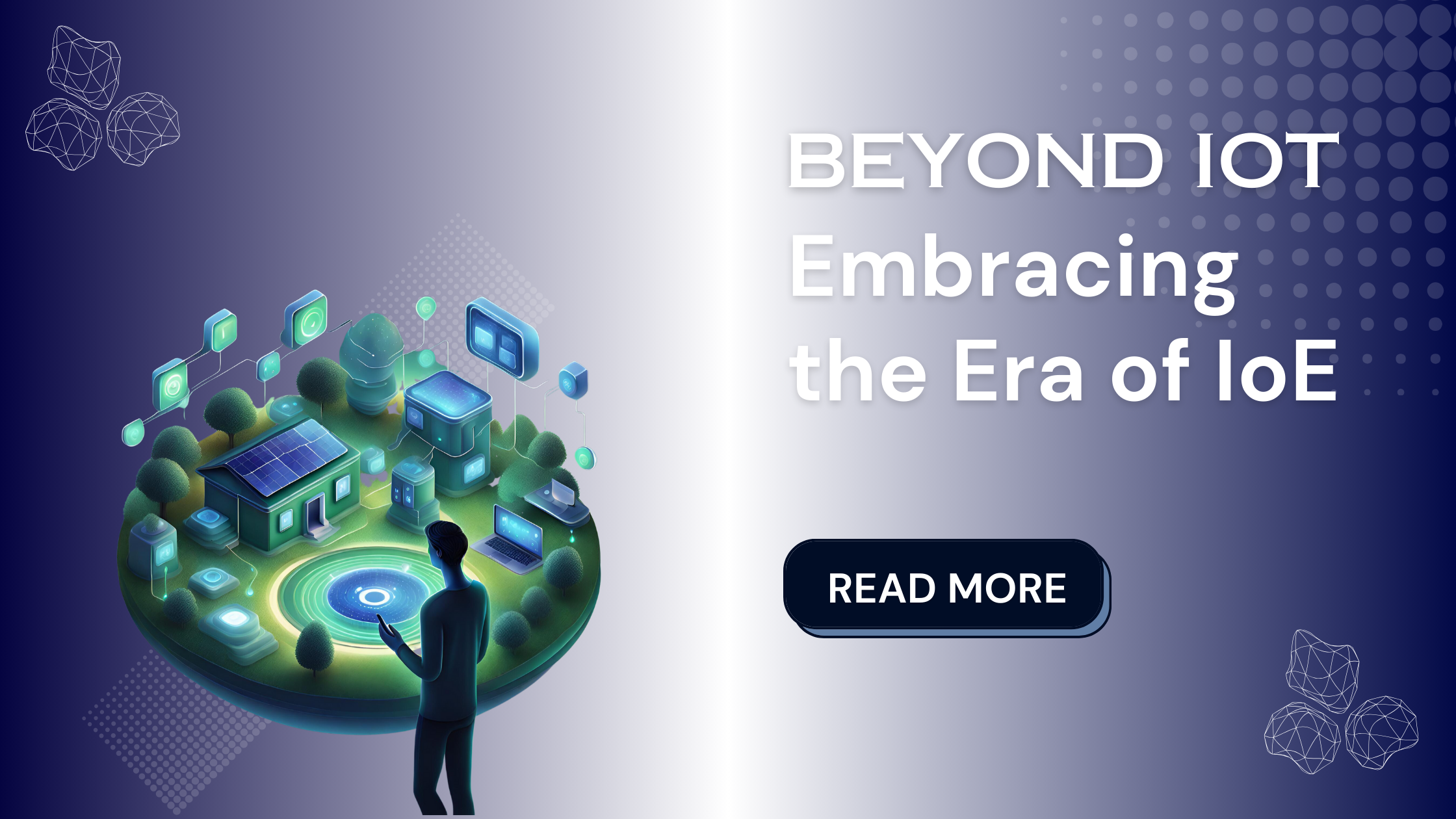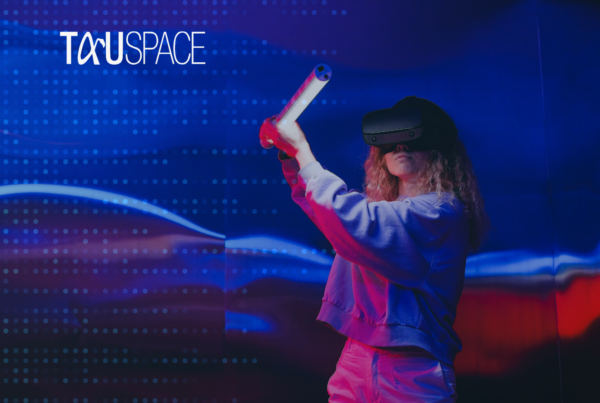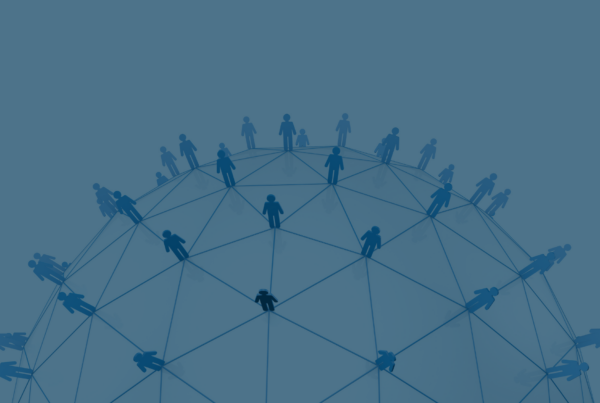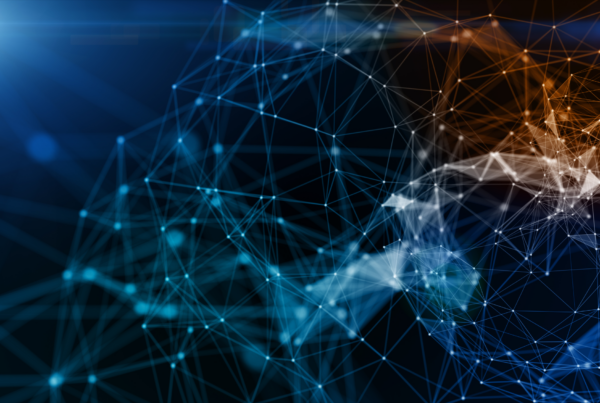The Internet of Things (IoT) has been groundbreaking for telecommunications. It has transformed our lives by connecting everyday objects to the internet, enabling them to collect and exchange data. However, as technology advances, we draw closer to experiencing a new era—the Internet of Everything (IoE). This blog post will explore what IoE means, its significance, and why you should be excited about its potential.
Understanding the Internet of Everything: Beyond IoT
While IoT refers to connecting devices and objects to the internet, IoE expands the scope exponentially. The term’s origin is credited to Cisco[1], and it encompasses the idea that virtually everything—objects, devices, machines, people, and even the environment—can be interconnected, forming a vast web of data exchange and communication. IoE is more than just devices; it’s about creating an interconnected ecosystem that transcends traditional boundaries.
Key Components of The Internet of Everything
- Devices and Sensors: IoE relies on an extensive array of devices and sensors that collect and transmit data. These devices can range from smartphones and wearables to smart appliances and industrial machinery.
- Data Networks: High-speed, low-latency data networks, such as 5G and beyond, are essential for IoE to function seamlessly. These networks enable the rapid exchange of data between devices and systems.
- Cloud Computing: The cloud serves as a central hub for processing and storing the massive volumes of data generated by IoE devices. It provides the computational power needed for data analytics and decision-making.
- Artificial Intelligence (AI): AI and machine learning play a crucial role in IoE by making sense of the vast amount of data generated. They enable predictive analytics, automation, and real-time insights.
- Security and Privacy: With IoE’s extensive connectivity, security and privacy become paramount. Robust encryption, authentication, and access control mechanisms are necessary to protect sensitive data.
The Significance of The Internet of Everything
Now, let’s explore why IoE is more than just a buzzword:
- Revolutionising Industries: IoE has the potential to revolutionise various sectors other than telecoms, including healthcare, transportation, agriculture, manufacturing, and more. It can drive efficiency, reduce costs, and enhance services.
- Data-driven Insights: With IoE, telecom companies can gather valuable data on network performance, user behavior, and device interactions. This data can be leveraged to optimise network operations and improve user experiences.
- Scalable Networks: The extensive connectivity demands of IoE will drive the expansion and optimisation of telecom networks. Scalability will be a key focus, ensuring that networks can handle the increasing volume of data.
- Edge Computing: IoE will further promote the rise of edge computing, where data processing occurs closer to the source, reducing latency and enabling real-time decision-making. This shift will impact network architecture and design.
- New Revenue Streams: Telecom companies can explore innovative business models and revenue streams by providing connectivity services for IoE devices. Partnerships and collaborations with industry players will, therefore, be crucial.
Internet of Everything Use Cases
In a virtual round table titled The New Age of Interconnectivity, CEO of CarrierX, David Erickson, states: “I see the future of the Internet of Things, voice, and [the] interconnectivity of all things as being white space for disruption. I think there’s a lot of big companies with big company ways that have been around for big histories, and I think that things are moving very fast [and] that things are changing very rapidly…[so] the agility is going to be found in the middle market and smaller companies”[2].
This statement supports our deliberations on how Innovators, Disruptors, Entrepreneurs, and Accelerators (I.D.E.A.s) will be key to transforming how telcos operate, even within the space of IoE. To make IoE more tangible, let’s examine a few compelling use cases across various industries:
- Smart Cities: IoE can transform urban environments by enabling efficient traffic management, waste collection, and energy consumption. Smart sensors can monitor air quality, noise levels, and more, enhancing the quality of life for residents.
- Healthcare: IoE devices can monitor patients’ vital signs in real-time, enabling remote healthcare monitoring. This is especially valuable for elderly or chronically ill individuals.
- Agriculture: In precision agriculture, IoE can optimise crop management by monitoring soil conditions, weather, and crop health. This leads to increased crop yields and sustainable farming practices.
- Manufacturing: IoE-powered industrial automation can streamline manufacturing processes, reduce downtime, and improve product quality.
- Retail: Smart shelves and checkout systems can provide real-time inventory management and personalised shopping experiences, boosting efficiency and customer satisfaction.
Challenges and Considerations
As with any technological advancement, IoE comes with its set of challenges and considerations:
- Security Concerns: The extensive connectivity of IoE increases the attack surface for cyber threats. Robust security measures are essential to protect against data breaches and unauthorised access.
- Privacy: IoE generates vast amounts of personal data. Striking a balance between data collection for insights and protecting user privacy will be challenging.
- Regulatory Compliance: IoE may be subject to various regulations, depending on the industry and region. Telecom companies must ensure compliance with these regulations.
- Network Reliability: As IoE becomes more ingrained in daily life, network outages or disruptions can have significant consequences. Ensuring network reliability is crucial.
Conclusion
The Internet of Everything (IoE) represents a profound shift in how we interact with and leverage technology. It’s not just about connecting devices; it’s about creating a seamless web of connectivity that spans industries and enhances our lives. For telcos, IoE presents both challenges and opportunities. By investing in scalable, high-speed networks, embracing edge computing, and prioritising security and privacy, telecom companies can position themselves at the forefront of the IoE revolution. IoE is no longer a concept set for the distant future; it’s happening now, and those who harness its potential will shape the technological landscape for years to come.
[1] https://www.cisco.com/c/dam/global/en_my/assets/ciscoinnovate/pdfs/IoE.pdf [2] https://www.youtube.com/watch?v=ZICoG7P9K4Y









